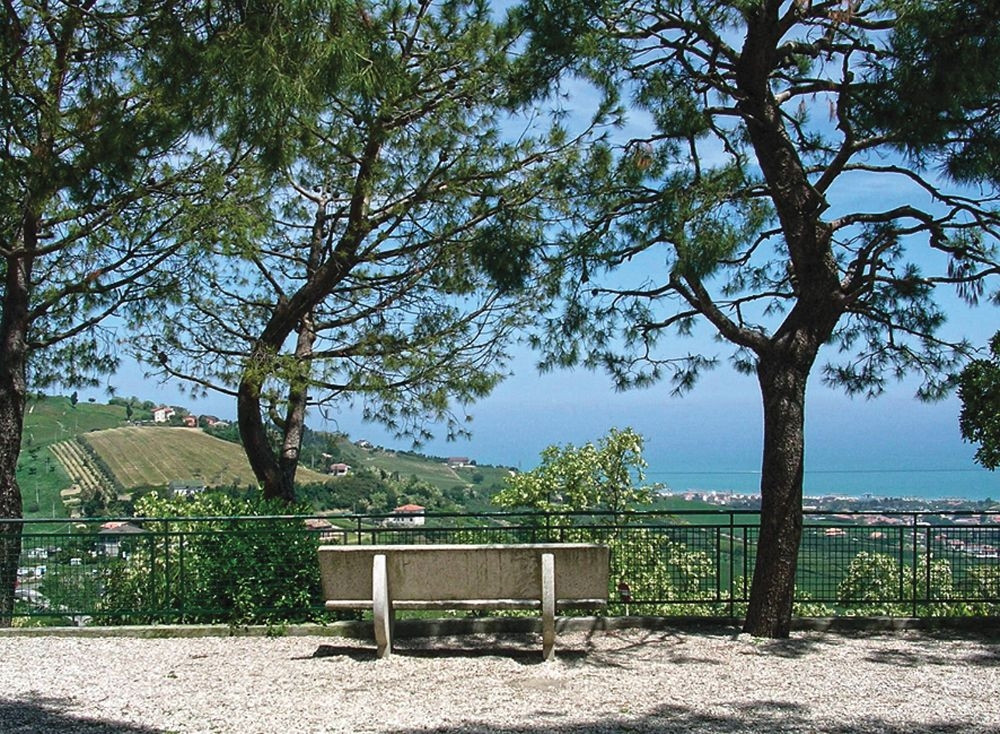From the Adriatic coast to the Sibilline Mountains, where echoes of the cries of the fabled sibyls, hermits and travelers can reputedly be heard, the territory of the Province of Fermo is laid out, dotted with as many as forty municipalities - all the castles of the ancient Marca Fermana. It lies in the heart of an evocative ridge of hills, crowned by villages that remain the authentic bearers of centuries of history, art and traditions. Along the main valleys, Valtenna, Valdete and Valdaso, a varied, ordered agriculture is maintained, alongside the fervor of modern industrial production; both express the character of the people: hard-working, creative and steadfast.
The tourist who leaves the beaches and climbs up towards the mountains - passing through Fermo, an aristocratic and secretive city - can experience a varied walk through a harmonious blend of hills, flatlands and rugged cliffs. The villages here and there provide historical traces of the Piceni people and the Romans: hamlets and abbey invoke the fascination of the Middle Ages, and a visitor can lose track of time studying the many faces of the Madonnas of Crivelli or the surreal places of Licini. It is here one arrives to rediscover crafts and trades once thought to have disappeared, and encounters the products of industris of quality.
Once ready to wind down, the visitor can relax and take in the flavors of a trattoria where every dish speaks of a distant, culinary heritage. Of course, the heart of the territory is Fermo - an ancient Roman colony, then studded with castles and a knowledge center, and today the Provincial capital of a larger and varied production zone. Fret not over Fermo's more modern aspects, for the Roman baths, the Duomo, the Renaissance-style piazza, and the Teatro dell'Aquila all await to tell of its long and noble history. The territory of Fermo is one vast museum. Everywhere we find the archaeological relics of both the Picentini people and the Romans - splendid abbeys, solitary churches, Medieval towers and noble palaces. The farming methods relate the models of the Roman villa and the Benedictine abbey, while the castles and villages tell of the epoch of the Medieval communes. The Picentini made Grottazzolina and Belmonte centers for processing amber, leaving behind the splendid handle of the “Lord of the Horses.” The Roman remains are even more evident, i.e. the cisterns at Fermo, an intact theatre, the remains of the villas, and an Hellenistic temple at Monte Rinaldo. Traces of the Lombards are also evident in the country churches of Belmonte and Falerone. Before the epoch of the communes, the Farfensi Monks (9th century) transformed the community, building castles and abbeys (not to be missed is Santa Maria Mater Domini di Ponzano).
The coastline is an array of long, golden beaches interlaced with shady pine trees. The modern beach of Porto Sant’Elpidio, the Lido in Fermo, the liberty promenade of Porto San Giorgio, the gravel strips of Marina Palmense and Marina di Altidona, and the coves of Pedaso offer tourists a perfect combination of natural landscapes and high-quality services, from the touristic port to the long cycling trails, and from the lively chalets to the picturesque trattorias.
Beyond the beach are lively, modern towns with a patchwork of little streets and historic treasures: the tiny fishermen's houses at Porto Sant'Elpidio; the intact fishing village at Porto San Giorgio with the Rocca Tiepolo, built in the 13th-Century in defense of the ancient port that once traded with Venice; and the lighthouse of Pedaso.






